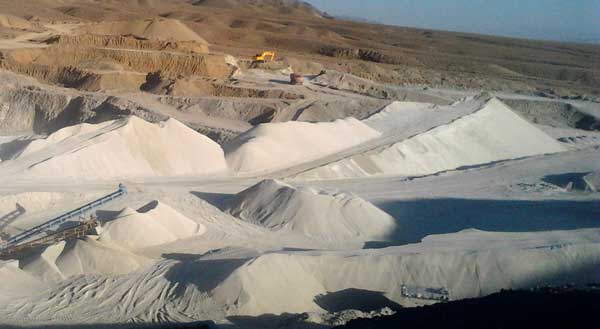
Blog
Magnesite

Magnesite is a mineral with the chemical formula MgCO3 (magnesium carbonate). Mixed crystals of iron(II) carbonate and magnesite (mixed crystals known as ankerite) possess a layered structure: monolayers of carbonate groups alternate with magnesium monolayers as well as iron(II) carbonate monolayersManganese, cobalt and nickel may also occur in small amounts. Occurrence Magnesite occurs as veins in and an alteration product of ultramafic rocks, serpentinite and other magnesium rich rock types in both contact and regional metamorphic terrains. These magnesites often are cryptocrystalline and contain silica in the form of opal or chert. Magnesite is also present within the regolith above ultramafic rocks as a secondary carbonate within soil and subsoil, where it is deposited as a consequence of dissolution of magnesium-bearing minerals by carbon dioxide within groundwaters. Formation Magnesite can be formed via talc carbonate metasomatism of peridotite and other ultramafic rocks. Magnesite is formed via carbonation of olivine in the presence of water and carbon dioxide at elevated temperatures and high pressures typical of the greenschist facies. Magnesite can also be formed via the carbonation of magnesium serpentine (lizardite) via the following reaction: serpentine + carbon dioxide → talc + magnesite + water 2 Mg3Si2O5(OH)4 + 3 CO2 → Mg3Si4O10(OH)2 + 3 MgCO3 + H2O. However, when performing this reaction in the laboratory, the trihydrated form of magnesium carbonate (nesquehonite) will form at room temperature. This very observation led to the postulation of a "dehydration barrier" being involved in the low-temperature formation of anhydrous magnesium carbonate. Laboratory experiments with formamide, a liquid resembling water, have shown how no such dehydration barrier can be involved. The fundamental difficulty to nucleate anhydrous magnesium carbonate remains when using this non-aqueous solution. Not cation dehydration, but rather the spatial configuration of carbonate anions creates the barrier in the low-temperature nucleation of magnesite Magnesite has been found in modern sediments, caves and soils. Its low-temperature (around 40 °C) formation is known to require alternations between precipitation and dissolution intervals. Magnesium-rich olivine (forsterite) favors production of magnesite from peridotite. Iron-rich olivine (fayalite) favors production of magnetite-magnesite-silica compositions. Magnesite can also be formed by way of metasomatism in skarn deposits, in dolomitic limestones, associated with wollastonite, periclase, and talc.

